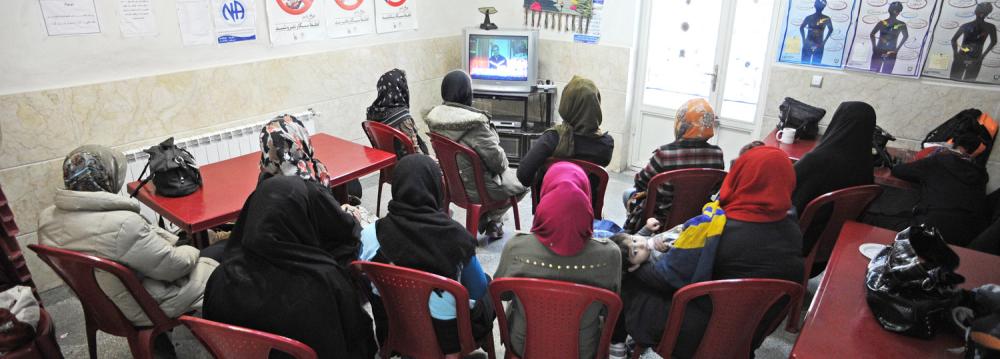At the opening ceremony of a residential addiction treatment center for women in east Tehran Province, Vice President for Women and Family Affairs Shahindokht Molaverdi pointed out that women constitute 10% of the country’s drug addicts (who number around 2 million, but unofficial figures put the number much higher), and therefore “we need comprehensive and special planning to fight the social harm among women.”
Although it may not be a large number percentage-wise, the spread of drug addiction is faster among women than in men, and women’s addiction is much more destructive within a society with far more adverse consequences than that of men.
“Women play an important role in family life. They are also primary caretakers of children,” she noted.
The SWO (State Welfare Organization) center ‘Mehr-e-Madar’ in Siahsang, Pardis County, opened on Tuesday. “More residential centers should be established across the country to admit and rehabilitate female addicts and prevent relapse among them,” she said, Borna News Agency reported.
Noting that it is the sixth residential treatment center established in Tehran Province so far, she said the aim of the facilities is to treat, rehabilitate female addicts and empower and support them and their children.
Like other centers, the Pardis facility will sign a MoU with Technical and Vocational Training Organization to provide courses like tailoring to women.
Head of SWO Anoushiravan Mohseni Bandpei, who was present, said as the first step, detoxification services will be provided to the women. “We will then implement schemes to empower the women through vocational training and job-creation. Provision of financial support and housing is also on our agenda.”
At present there are 100 addiction rehab centers for women and 1,200 rehab centers for men across the country. Last year (ended March 20) more than 60,000 addicted women were treated and released after rehab.
Role of NGOs
According to Interior Minister Abdolreza Rahmani Fazli, over 80% of harm reduction and treatment programs in the country are undertaken by non-governmental organizations and of the 2,271 NGOs active in the field, 37% are involved in prevention programs, 56% in treatment, and 7% in harm reduction.
Nearly 7,500 treatment and harm reduction centers are operating across Iran and have reached out to over 700,000 people over the past year that ended in March.
The Iran Drug Control Headquarters (IDCH) has been encouraging the involvement of NGOs in the three areas of planning, policymaking and launching and overseeing programs.
Adoption of a community-based approach is the main strategy pursued by the government at the current juncture. The community-based approach has paved the way for the participation of various social groups as well as people from different walks of life in the campaign against narcotics.
There is a 22% rise in the number of new NGOs in the country.
Participation of NGOs is particularly significant since they mobilize communities in prevention of drug use and help provide treatment as well as rehabilitation for individuals, Fazli said.
Types of Drugs Used
According to a 2016 study, the total number of regular and recreational substance users is estimated to be between four and seven million. Between 1.2 and 2 million people are dependent on illicit drugs mainly cheap Afghan opium, heroin and/or methamphetamine. Other types of illicit drugs used include opium residues, hashish, tramadol and prescription opioids.
The Ministry of Health in 2014 reported that there was one drug-using woman per eight drug-using men in the country, and illicit drug use is a health concern among a section of the women.
In general, women are opiate smokers or poly-smokers of opiates and methamphetamine. In addition, women with illicit drug use problem are raised in poor environments and have less education and employment than men, the study said.
According to a report from the SWO, almost 10% of people seeking treatment at drug treatment centers are women. Women’s needs for drug treatment motivated health policy makers to approve women-only drug treatment and harm reduction services in the community.
The first women-only (non-government) residential center was established by the NGO Rebirth Society in Shiraz, capital of Fars Province in 2002. The treatment program included 12-step meeting sessions and religious-based intervention. In the same period, “Chitgar” therapeutic community center was established by the NGO in Tehran to admit women from all over the country.
In addition, “Khaneye Khorshid” (sun house) drop in center was established in Tehran in 2006. The center provides methadone maintenance treatment (MMT), a comprehensive treatment program that involves the long-term prescribing of methadone as an alternative for opioid-dependent addicts. Central to MMT is the provision of counseling, case management and other free medical and psychosocial services.


